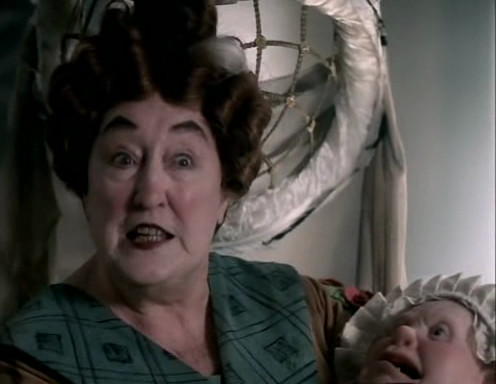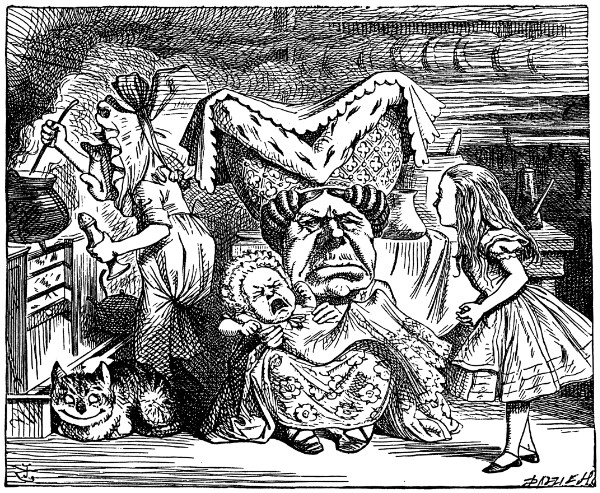
The illustration of the Duchess from Alice’s Adventures in Wonderland should be familiar to anyone who’s read the book. The original illustrations for Alice are rightly beloved and have withstood the passage of 150 years a hell of a lot better than I expect I will. This is partly down to the talents of Sir John Tenniel, who illustrated both Alice books, and partly because Tenniel worked closely with Lewis Carroll and the illustrations are therefore part of the text. Over the years dozens of artists have done their own illustrations for Alice, but very few of them compare to the originals. They are part of the novels and it’s folly to try and replace them. (Although the illustrations by Salvador Dalí and Mervyn Peake are worth checking out, but it’s bloody Dalí so he can do what he likes. As the Duchess would say, the moral of the story is don’t do your own illustrations for Alice unless you’re a genius.)
It’s been said that “Jabberwocky”, the poem from Through the Looking-Glass, makes a great study in translation because of the unique problems in translating reasonable-sounding nonsense. (“’Twas brillig, and the slithy toves…” Course it was, mate.) The same is true of the Alice books themselves because they must be the most adapted novels in the history of cinema. Wikipedia lists no fewer than 36 screen adaptations, and that’s not even counting new works set in that universe like Tim Burton’s two films or the miniseries on the Syfy channel. Three of those adaptations alone are silent films — a particular fetish of mine. But how the hell do you adapt something as visually bizarre as Alice for the screen? It’s not too hard to draw a cool-looking Cheshire Cat or Queen of Hearts, but how do you actually film talking cats and playing cards without making it look unbelievable?
For my money the character of the Duchess makes a really good yardstick for the style of an Alice adaptation. But before we go forward in time, let’s go back — to c. 1513 when Quinten Massys painted “An Old Woman” (aka “The Ugly Duchess”):
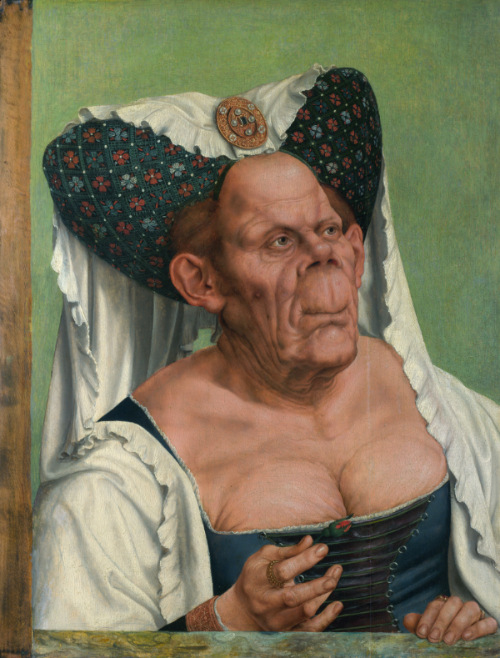
I don’t think I need to argue too hard that Tenniel’s illustration of the Duchess was nicked from this painting. For a while there art historians tried to argue that Massys himself took his inspiration from a sketch by Leonardo da Vinci, but it turns out this human centipede ends with Massys, not da Vinci. The consensus now seems to be that Massys got in first and da Vinci (or someone in his circle) copied him later.
If you’re animating your Alice adaptation then you’re laughing — you get the same Get Out Of Jail Free card that illustrators have and you can draw pretty much whatever you like (though it’s worth noting that the best-known adaptation, Disney’s 1951 animation, omits the Duchess entirely). But if you’re going for a live-action adaptation, you can go two routes: not even trying, or shooting the moon. The adaptations that don’t even try simply have humans depicting the animals without costumes. These appeal to our understanding that we’re watching Alice in Wonderland and we should know that that guy wearing a three-piece suit is actually supposed to be a frog. The adaptations that shoot the moon go all-out to stylize the characters with theatrical costumes on the understanding that it’s impossible to film a realistic live-action Alice so you may as well go for broke.
The Duchess is sort of hard to make out in the 1903 and 1910 films, so let’s skip ahead to 1915:
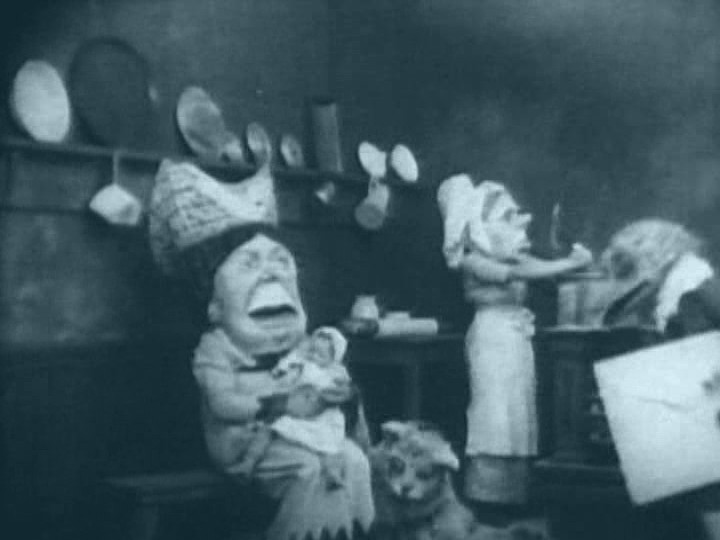
Now this is some prime-time wackadoodle moon-shooting. They’ve gone for some very theatrical-style masks that appear to be based off the Tenniel illustrations. And I’ll be honest, you could do a lot worse than simply wearing giant carnival-mask versions of Tenniel’s work. If the original is that brilliant, then you can’t go too far wrong if you just copy it.
We have a slightly more subtle take on the Duchess in 1931:
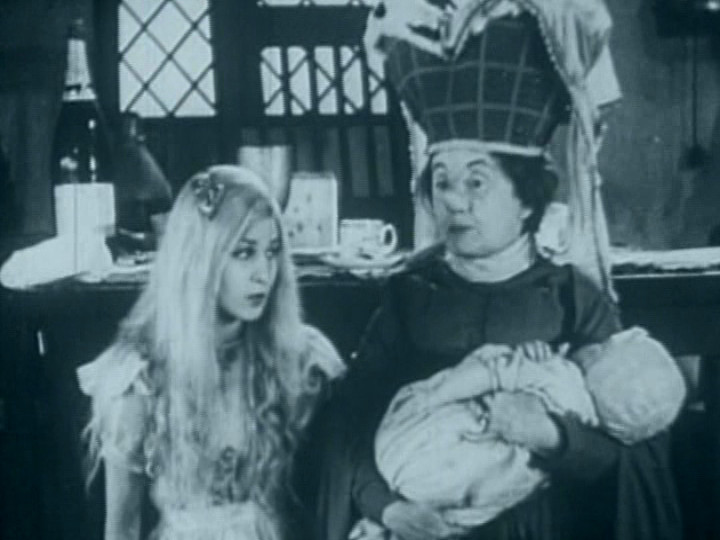
She looks a lot more like a real person here, although still stylized and very clearly based off the Tenniel illustration with that giant headgear and a putty nose to emphasize her ugliness. I only wish the 1931 White Rabbit came off half as well:
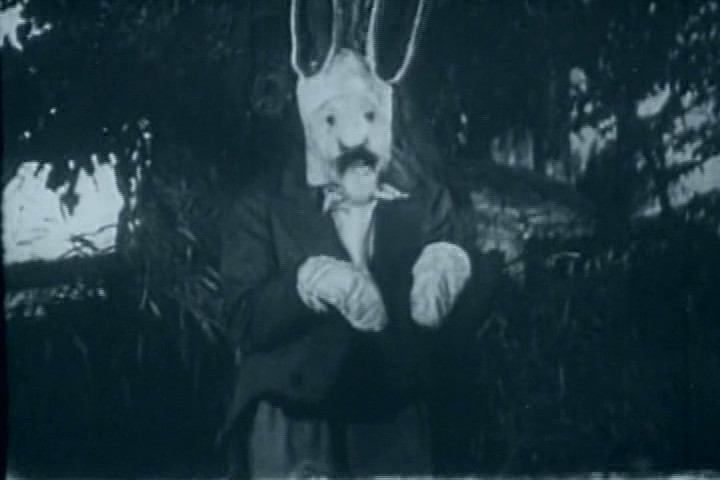
Where we really enter nightmare territory is the 1933 film, which takes us plunging back into maskland with some frankly terrifying costumes:
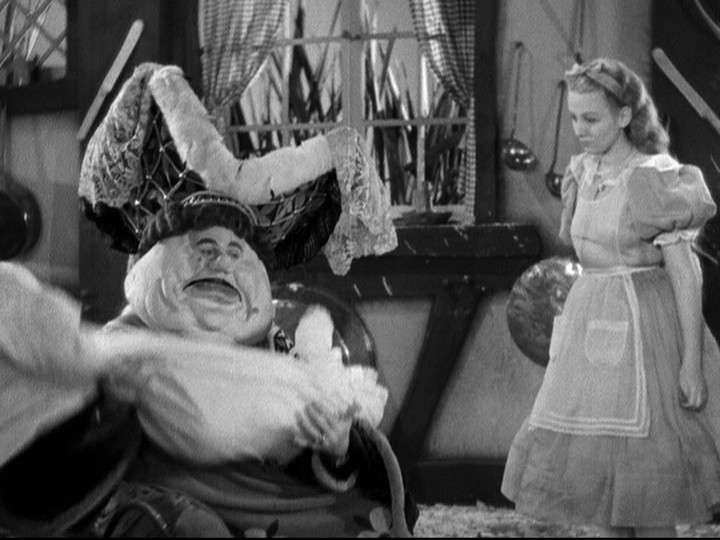
Can this costume get any more horrifying? I’m glad you ask:
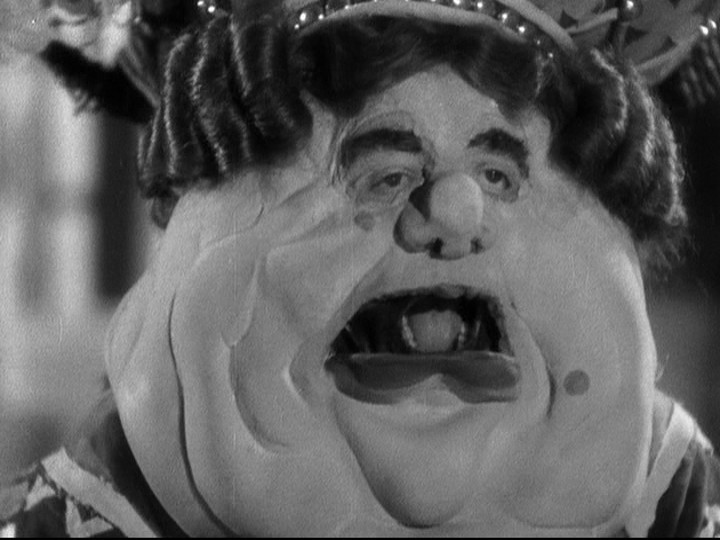
Mercifully Alice adaptations after this time start to allow the Duchess to look like a goddamn human being and not a blob-woman from Mars:
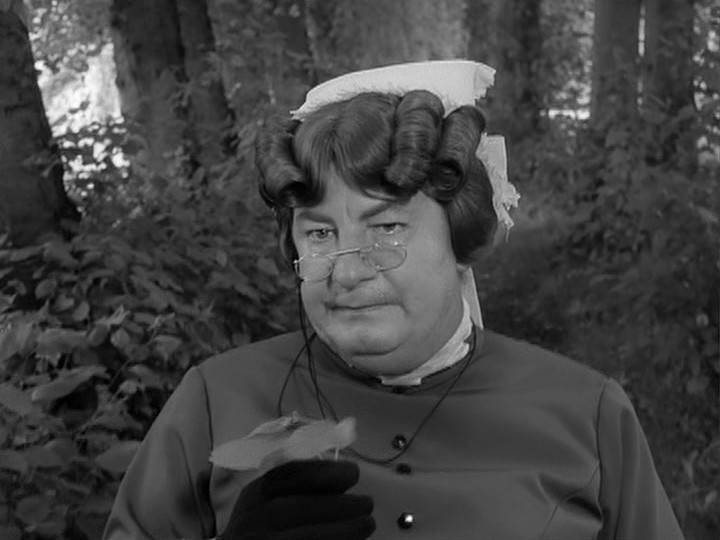
Except, of course, when your Alice adaptation is pretty much just filming a stage production, as in this 1983 version that features lots of flappy-mouthed masks, sets that look like line-drawings, a Cheshire Cat with a mechanical tail and light-up lamp eyes, an inflatable baby, and this Duchess who looks suspiciously like a dead drag queen:
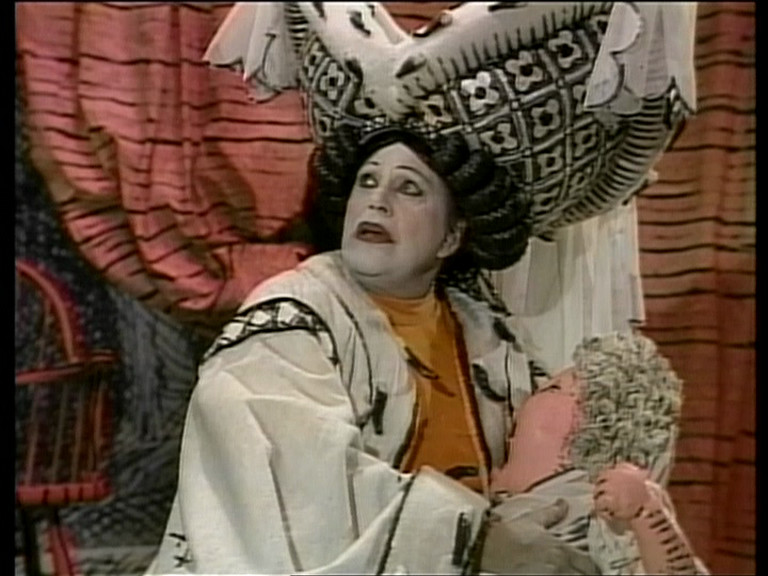
The original illustrations will always hold a special place in my heart, and although Alice might be ill-advised to follow the letter of the originals, I have a soft spot for human-based adaptations that take their cue from Tenniel rather than attempting to do their own stupid thing that usually doesn’t come off. I’ll leave you, then, with one of the great Duchesses — Elizabeth Spriggs in the 1999 film, rubber baby and all:
